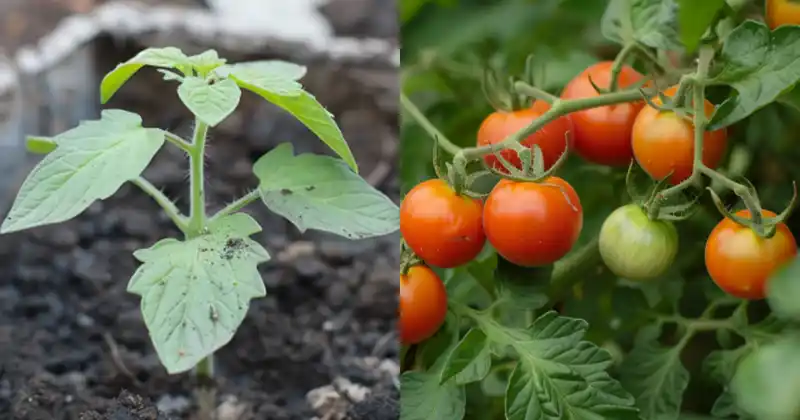Growing Tomatoes: A Complete Guide from Seedlings to Harvest
Tomatoes are a cherished vegetable crop, loved by gardeners and chefs alike for their versatility and flavor. With the right care and techniques, you can cultivate abundant, delicious tomatoes. This guide will walk you through the process from seedlings to harvest.
Starting with Seedlings
To ensure strong plants, begin by growing tomato seedlings indoors. This process allows them to develop robust roots and stems before facing outdoor conditions.
Timing
The journey from planting to your first harvest typically takes about 110 days. Start your seedlings indoors about 6-8 weeks before the last expected frost date in your area.
Transplanting to the Garden
Once the frost danger has passed, it’s time to move your seedlings outdoors. Here’s how to do it effectively:
Depth and Positioning
- Plant Deeply: Bury the seedlings up to the third leaf node. This encourages additional root growth along the buried stem, enhancing stability and nutrient absorption.
Removing Lower Leaves
- Prepare the Seedlings: Before planting, remove the bottom three leaves to promote air circulation and reduce disease risk.
Enriching the Soil
- Calcium Boost: Incorporate crushed eggshells into the planting hole. Eggshells are rich in calcium, essential for root development and preventing blossom end rot. Grind the shells finely and add a tablespoon to each hole.
Nurturing with Eggshell Fertilizer
You can also create a liquid fertilizer from eggshells:
Preparation
- Wash and dry the shells from ten eggs, then crush them finely.
- Soak the crushed shells in a jar with 500 milliliters of 9% vinegar for 5-7 days, stirring occasionally.
Application
- Dilution: Strain the solution and dilute one tablespoon of the liquid in one liter of water. Apply 500 milliliters per plant every 10-14 days during fruiting to prevent calcium deficiencies.
Alternative Organic Fertilizers
- Chicken Manure: A great source of nitrogen, phosphorus, and potassium. Add a handful to each planting hole to boost growth.
- Crushed Peas: If chicken manure isn’t available, use crushed peas for organic nitrogen. Mix a tablespoon into each hole before planting.
Planting Tips for Optimal Growth
Timing
- Transplanting: Do this in the late afternoon or on cloudy days to minimize transplant shock.
Orientation
- Planting Angle: Lay the seedlings on their sides at a slight angle, burying them up to the third leaf node. This technique is especially useful for leggy plants.
Watering and Protection
- Initial Watering: After planting, water the plants thoroughly with warm water. Shield them from direct sunlight initially to help them acclimate.
Boosting Plant Health
To give your tomatoes a strong start, consider an initial powerful feeding to enhance immunity and growth energy. This initial boost is crucial for their development.
Conclusion
By following these steps, you can cultivate healthy, productive tomato plants that yield a bountiful harvest. Proper planting techniques and organic fertilization methods will ensure your tomatoes grow robustly and resist common issues like calcium deficiency and transplant shock. For more comprehensive advice, visit our ultimate guide to growing tomatoes. Happy gardening!
